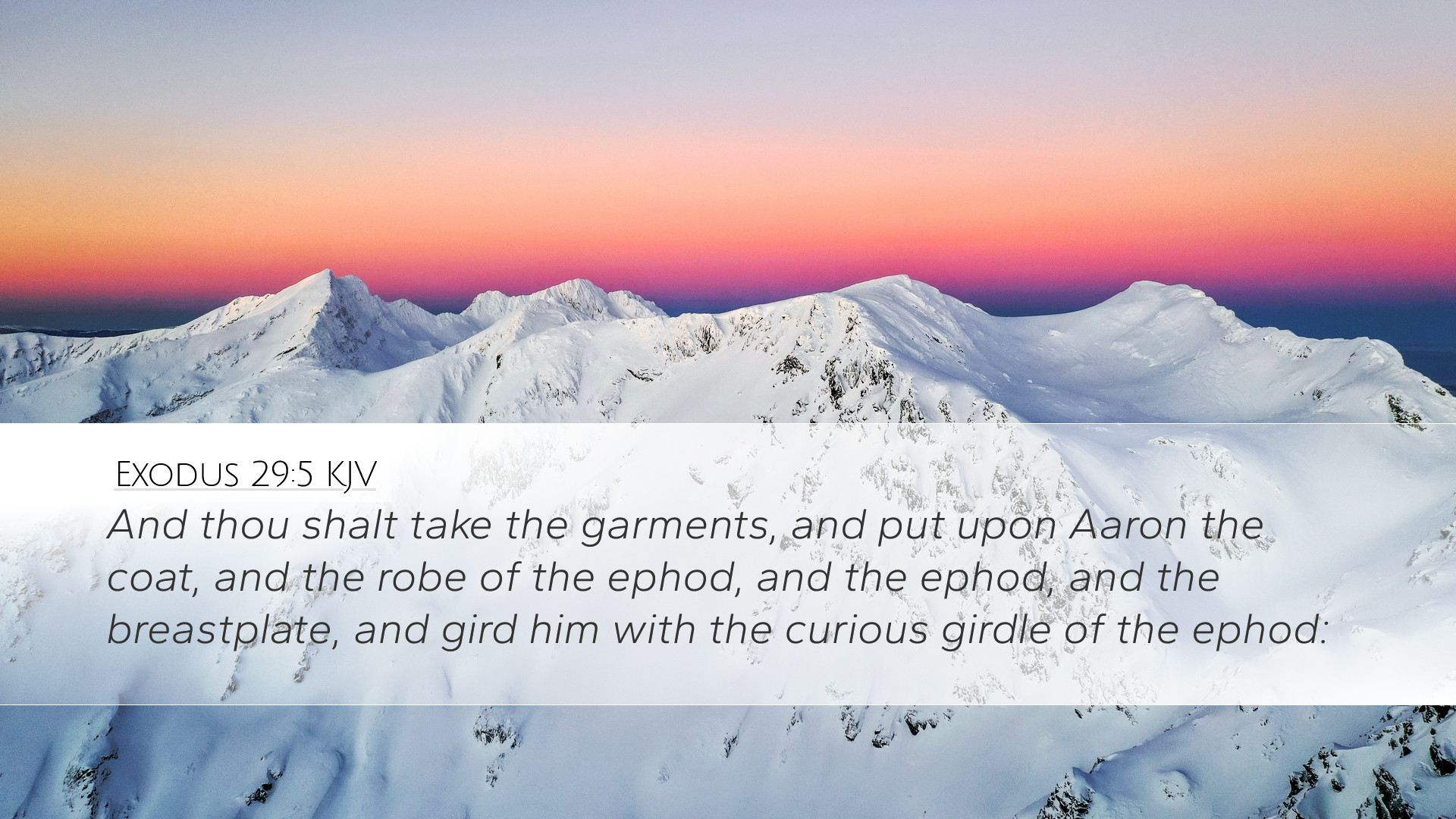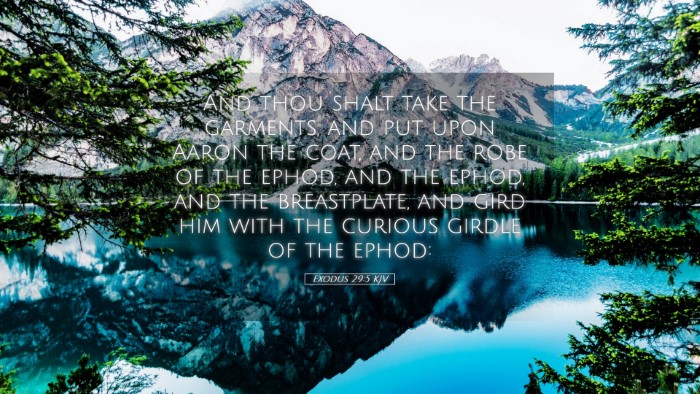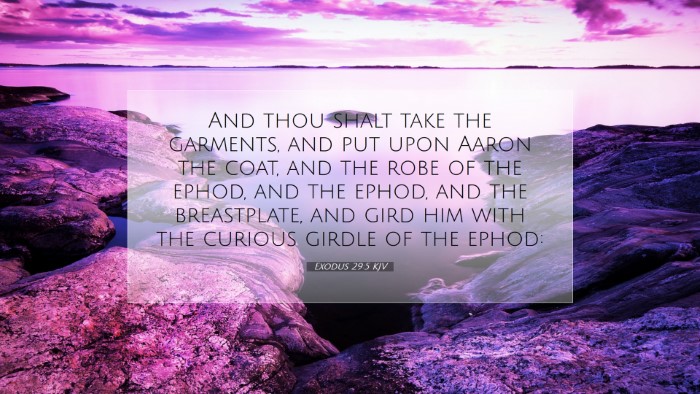Exodus 29:5 Commentary
Verse: "And you shall take the garments, and put upon Aaron the coat, and the robe of the ephod, and the ephod, and the breastplate, and gird him with the curious girdle of the ephod." (Exodus 29:5)
Introduction
This verse is a pivotal moment in the consecration of Aaron as the High Priest. The significance of garments in the context of priesthood cannot be overstated, as they serve both practical and symbolic purposes. Various public domain commentaries offer rich insights into the text, emphasizing the theological and ritualistic dimensions of these garments.
Significance of the Garments
Matthew Henry's Commentary elaborates on the importance of these garments in denoting the holiness and the responsibility that comes with the priestly office. The garments serve as a reminder of the duties bestowed upon Aaron, as well as the glory and beauty of the work of God.
Albert Barnes highlights that each piece of clothing is significant in its own right, with specific functions and representations, underscoring the necessity of appearing before God in a way that reflects His majesty.
Priestly Garments and Their Types
The garments described in Exodus 29:5—namely, the coat, ephod, breastplate, and girdle—are rich in symbolism:
- The Coat: A symbol of purity and holiness, it signifies that the priest is to be free from any moral stain.
- The Ephod: This garment denotes strength and dignity, encapsulating the priest's authority in service to God.
- The Breastplate: Adorned with stones representing the tribes of Israel, this reflects the priest's role as an intercessor between God and His people.
- The Girdle: The girdle, or belt, serves a functional role in fastening the garments, symbolizing readiness to serve.
Theological Insights
Adam Clarke points out that the act of vesting Aaron in these garments is a significant moment in the history of Israel's worship. It represents the concept that one's standing before God is granted through divine appointment and ordination rather than personal merit. Each garment is not simply for physical appearance but serves to communicate deeper truths about the nature of God and the relationship between the divine and humanity.
The Role of the Priest
The act of dressing Aaron serves as an inauguration into his role, where he becomes a mediator. This theme resonates with the New Testament understanding of Christ as the ultimate High Priest, who also was robed in humility and glorified in resurrection. The symbolism of these garments thus extends beyond the immediate context to encompass the broader scope of redemption history.
Pastoral Applications
For pastors and ministers, Exodus 29:5 provides a basis for discussing the importance of intentional preparation in spiritual leadership. The significance of the vestments relates to the serious responsibility of representing God to the congregation:
- Preparation for Ministry: Just as Aaron was to be adequately clothed for his task, contemporary ministers must also prepare their hearts and lives to serve effectively.
- Symbolic Representation: The garments symbolize how ministers are representatives of God's presence. They should embody the virtues of holiness, compassion, and righteousness.
- Intercession: The priestly role extends to praying and interceding for the people, which is a crucial part of church leadership today.
Conclusion
Exodus 29:5 is not merely a historical account of priestly vestment; it is an exposition on the nature of service, divine appointment, and the significance of preparation in spiritual leadership. As Matthew Henry, Albert Barnes, and Adam Clarke reflect, these garments encapsulate responsibilities enshrined in sacred tradition, pointing toward a fuller understanding of priesthood that culminates in Christ. The lessons drawn from this verse continue to be relevant and essential for those involved in pastoral leadership, teaching the importance of serving God and His people with utmost integrity and reverence.


